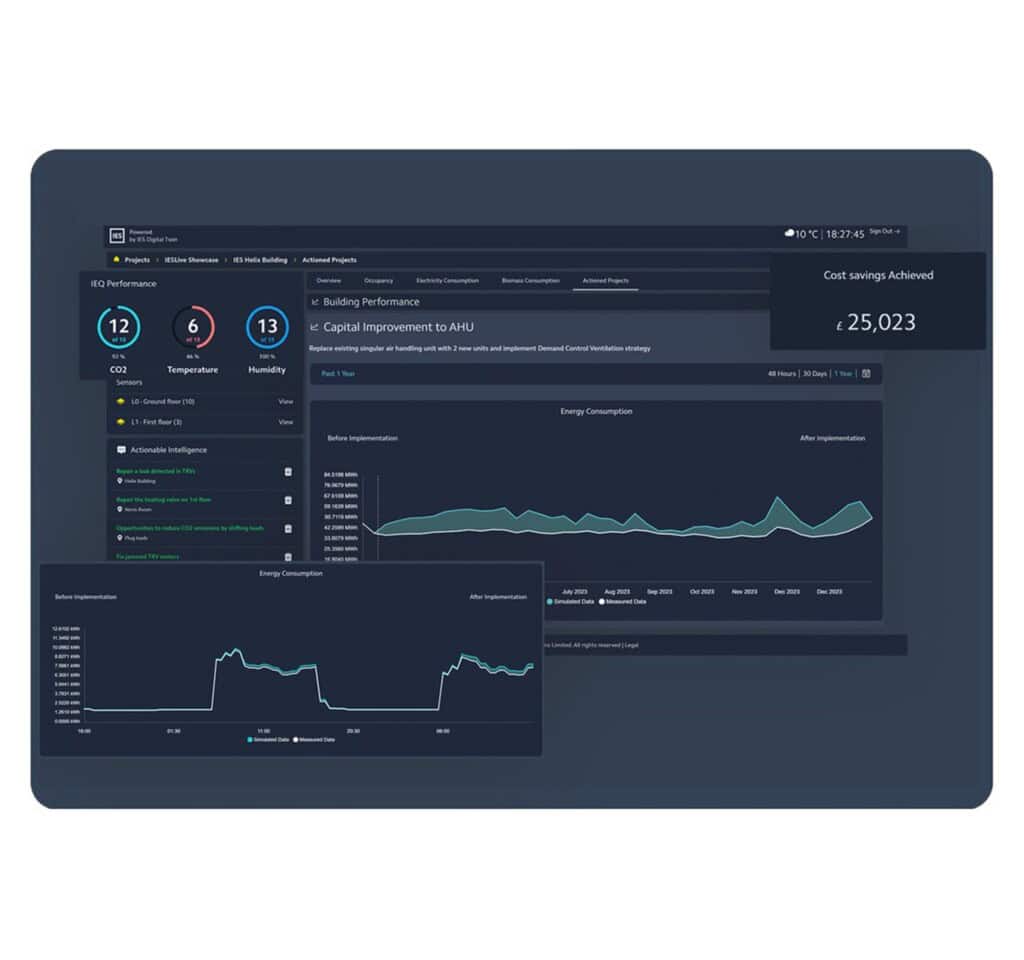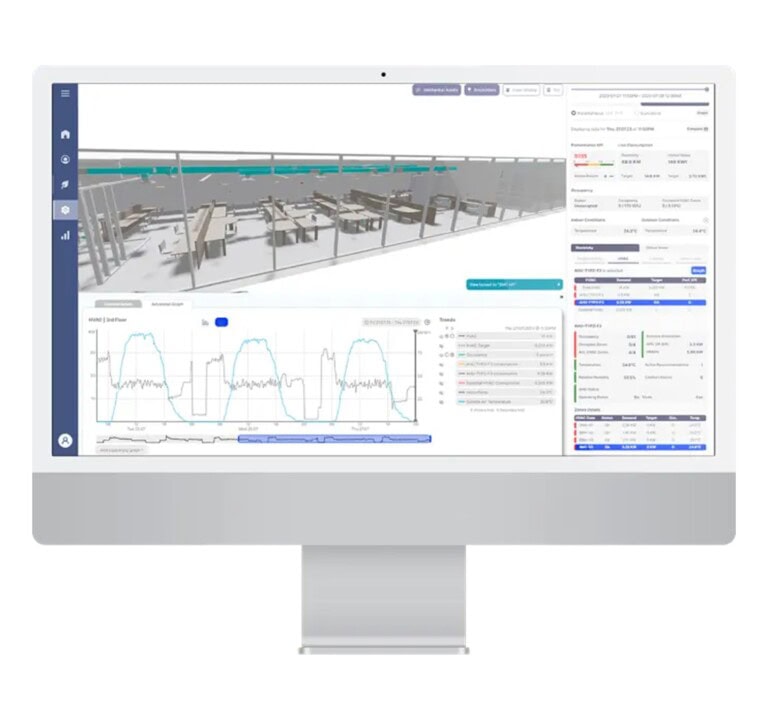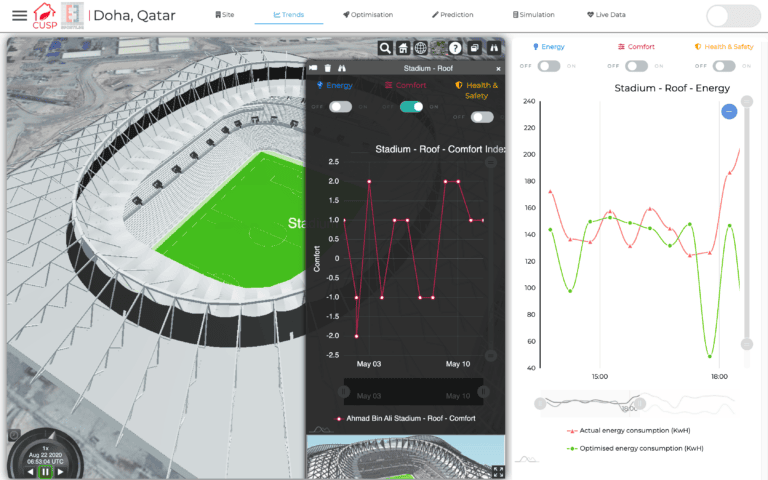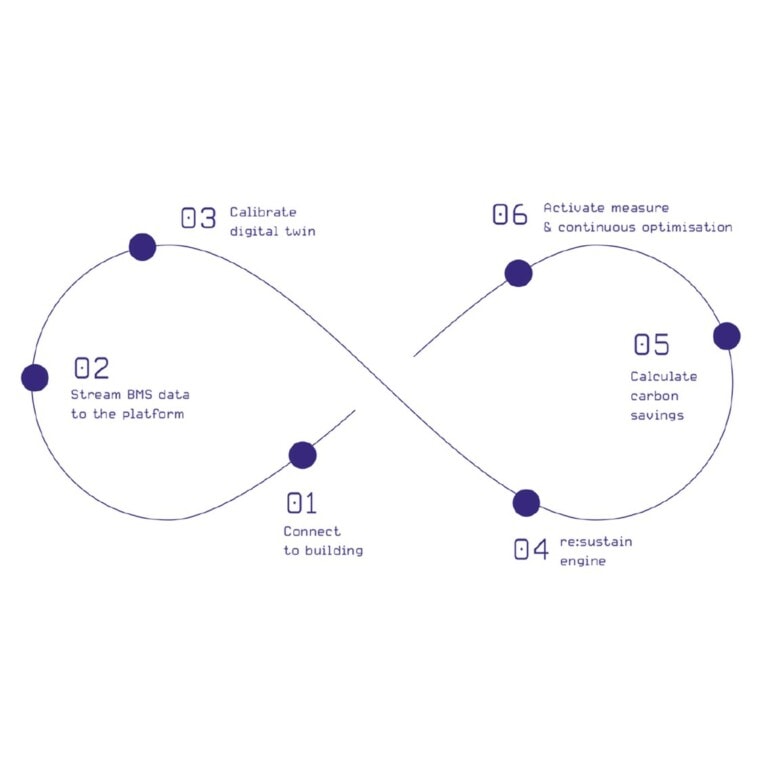Cloud-based platform to bridge the performance gap between design and operation

Problem Addressed
With 80% of the 2050 building stock already standing, one of the greatest challenges in the race to decarbonise is understanding how we can get our existing buildings to net-zero. Building owners and operators increasingly require support from AECO consultants to deliver retrofit, net-zero auditing/planning and operational optimisation services to help improve the performance of their existing buildings, define decarbonisation pathways and verify the impact of any measures implemented. However, to ensure these initiatives are successful, they need solutions that are investment and business case ready, based on accurate predictions and data they can trust.
Increasingly, there is also a need to ensure that building performance is locked in across the whole building lifecycle, to avoid the ‘performance gap’ between design intent and operation and help deliver the energy, cost and carbon reductions that many AECO clients want to see. There is also a need for solutions that can help balance the trade-offs between energy, carbon and cost reductions, against the comfort and wellbeing requirements of building occupants.
These challenges are exacerbated by the innate complexity of buildings, which are all essentially unique, with key performance impact factors that change daily and numerous complex interdependencies. IES Live provides a solution to help navigate all of these complex challenges, leveraging the value of energy modelling predictions and near real-time data, within a single intuitive platform.
Case Study
The University of Liverpool’s Foundation Building was the first project to use the IES Live energy and carbon management platform to verify the impact of a recent HVAC refurbishment and optimise its energy and carbon performance.
Having initially used an IESVE energy model, calibrated with historic monthly measured data to test the impact of different refurbishment scenarios, prior to implementation, IES Live enabled the university to connect live data from their BMS, energy meters and sensors to a performance digital twin following the refurbishment, to provide the facilities management team with a single pane view of operational performance metrics via the cloud.
Over an initial 9-month period, following the refurbishment, the project verified:
- 23% energy savings
- £25k operational cost savings
These savings continue to increase over time.
The university’s facilities management team is continuing to use IES Live to monitor and improve the building’s performance, as well as identify and plan further interventions to help move towards decarbonisation. Benchmarking against the simulated baseline, they can track performance and gain improvement insights for energy, carbon, and comfort, while continuing to measure and verify the ongoing impact of the HVAC refurbishment. IES Live is also helping to prevent operational drift on the building, by ensuring any issues are flagged and can be fixed before they begin to have an impact.
The University is now implementing IES Live on three more buildings across the campus.
Facts and Figures
This page presents data, evidence, and solutions that are provided by our partners and members and should therefore not be attributed to UKGBC. While we showcase these solutions for inspiration, to build consensus, and create momentum for climate action, UKGBC does not offer commercial endorsement of individual solutions. If you would like to quote something from this page, or more information, please contact our Communications team at media@ukgbc.org.
Related members
Related
Digital twin and building analytics platform

Building Optimisation Software Using AI and Digital Twins

BMS agnostic building optimisation

Energy Monitoring Platforms for Commercial Buildings

